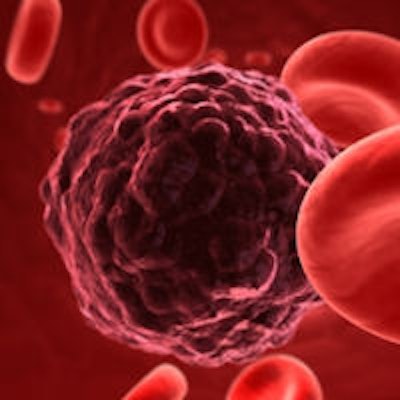
What if a treatment could kill only cancer cells and leave the surrounding organs alone? A novel combination of existing clinical treatments might be able to do just that, according to a new study in Nature Medicine (June 1, 2014).
The technology, called "quadrapeutics," works by instantaneously detecting and killing only cancer cells -- often by blowing them apart -- without harming surrounding normal organs, according to the researchers from Rice University, the University of Texas MD Anderson Cancer Center, and Northeastern University.
"We address aggressive cancers that cannot be efficiently and safely treated today," stated lead study investigator Dmitri Lapotko, PhD, in a press release. "Surgeons often cannot fully remove tumors that are intertwined with important organs. Chemotherapy and radiation are commonly used to treat the residual portions of these tumors, but some tumors become resistant to chemoradiation. Quadrapeutics steps up when standard treatments fail. At the same time, quadrapeutics complements current approaches instead of replacing them."
“Quadrapeutics shifts the therapeutic paradigm for cancer from materials — drugs or nanoparticles — to mechanical events that are triggered on demand only inside cancer cells.”
The first preclinical study of the anticancer technology quadrapeutics found it to be 17 times more efficient than conventional chemoradiation therapy against aggressive, drug-resistant head and neck tumors.
"Quadrapeutics shifts the therapeutic paradigm for cancer from materials -- drugs or nanoparticles -- to mechanical events that are triggered on demand only inside cancer cells," Lapotko said. "Another strategic innovation is in complementing current macrotherapies with microtreatment. We literally bring surgery, chemotherapies, and radiation therapies inside cancer cells."
Quadrapeutics radically amplifies the intracellular effect of drugs and radiation only in cancer cells, which makes it different from other developmental cancer treatments, Lapotko said. The quadrapeutic effects are achieved by tiny, remotely triggered nanoexplosions called "plasmonic nanobubbles." These nanobubbles are nonstationary vapors that expand and burst inside cancer cells in nanoseconds in response to a short, low-energy laser pulse. Plasmonic nanobubbles act as a "mechanical drug" against cancer cells that cannot be surgically removed and are otherwise resistant to radiation and chemotherapy.
In earlier studies, Lapotko showed plasmonic nanobubbles could be used alone to literally blow cells apart. In quadrapeutics, plasmonic nanobubbles are used to detect and kill cancer cells in three ways: mechanical cell destruction, intracellular drug ejection, and radiation amplification.
In cancer cells that survive the initial explosions, the bursting nanobubbles greatly magnify the local doses of both chemotherapy drugs and radiation. All three effects occur only in cancer cells and do not harm nearby vital healthy cells.
To administer quadrapeutics, the team uses four clinically approved components: chemotherapy drugs, radiation, near-infrared laser pulses of low energy, and colloidal gold, which are spheres of gold thousands of times smaller than a living cell.
 The first preclinical study of the anticancer technology "quadrapeutics" found it to be 17 times more efficient than conventional chemoradiation therapy against aggressive, drug-resistant head and neck tumors. Image courtesy of Dmitri Lapotko, PhD, and Ekaterina Lukianova-Hleb, PhD.
The first preclinical study of the anticancer technology "quadrapeutics" found it to be 17 times more efficient than conventional chemoradiation therapy against aggressive, drug-resistant head and neck tumors. Image courtesy of Dmitri Lapotko, PhD, and Ekaterina Lukianova-Hleb, PhD.The first component consists of a low dose of a clinically validated chemotherapy drug. The team tested two (doxorubicin and paclitaxel) using encapsulated versions of the drug that were tagged with antibodies designed to target cancer cells. Because of the magnifying effect of the plasmonic nanobubbles, the intracellular dose (the amount of the drug that is active inside cancer cells) is very high even when the patient receives only a percentage of the typical clinical dose.
The second is an injectable solution of nontoxic gold colloids. In quadrapeutics, the colloids are tagged with cancer-specific, clinically approved antibodies. These antibodies cause the colloids to accumulate and cluster inside cancer cells. Then these nanoclusters remain inactive until activated by a laser pulse or radiation.
The third quadrapeutic component is a short, near-infrared laser pulse that uses significantly less energy than a typical surgical laser. A standard endoscope delivers the laser pulse to the tumor, where the gold nanoclusters convert the laser energy into plasmonic nanobubbles.
Then, the last component is a single, low dose of radiation. The gold nanoclusters amplify the effects of radiation only inside cancer cells.
"What kills the most-resistant cancer cells is the intracellular synergy of these components and the events we trigger in cells," Lapotko said. "This synergy showed a 100-fold amplification of the therapeutic strength of standard chemoradiation in experiments on cancer cell cultures."
In this study, quadrapeutics was used to treat head and neck squamous cell carcinoma (HNSCC), an aggressive and lethal form of cancer that had grown resistant to both chemotherapy drugs and radiation. In mice, the quadrapeutic treatment was found to be so effective against HNSCC tumors that a single treatment using just 3% of the typical drug dose and 6% of the typical radiation dose effectively eliminated tumors within a week of its administration.
Lapotko is working with colleagues on prototyping and setting up a human clinical trial. In clinical applications, quadrapeutics will be applied as either a standalone or intraoperative procedure using standard endoscopes and other clinical equipment and encapsulated drugs.
Though the current study focused on head and neck tumors, quadrapeutics is a universal technology that can be applied for local treatment of various solid tumors, and may also prove especially useful for treating children because of its safety, Lapotko said.
The research was supported by the National Institutes of Health, the National Science Foundation, and the Virginia and L.E. Simmons Family Foundation.















